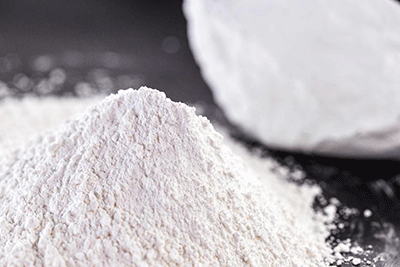


| Item | Index |
|---|---|
| Appearance | White powder |
| TiO2 content | ≥92.0% |
| Moisture | ≤0.8% |
| PH | 6.5-8.5 |
| Oil absorption | ≤21g/100g |
| Resistivity of water extraction | ≥50Ω |
| Residue(45 μm) | ≤0.05% |
| Organic treatment | Present | Key features: |
1)Excellent whiteness 2)High achromatic power and covering power. 3)High weather resistance, good dispersion and other characteristics. . |
| Recommended applications: | Mainly used in Water-based paint, latex paint, powder paint, ink, paper and other fields |
| Packing | In 25KG /500KG /1000KG bag or as per customer’s requirement |
|---|---|
| Storage | This product should not be stored outside or exposed to temperature extremes or to moisture.
To ensure optimum performance, it is recommended that the product is used on a first in, first out basis from receipt of shipment. |
Tel: 0086-25-52397808
E-mail: info@titanium-dioxide.net


| Common Names | TITANIUM DIOXIDE | ||
|---|---|---|---|
| Structure |

|
||
| CAS No. | 13463-67-7 | Boiling Point (℃) | 2900 |
| Molecular Weight | 79.866 | Melting Point (℃) | 1840 |
| Appearance | white powder | Bulk density | 3.84 |
| HS Code | 3206111000 | Flash Point (℃) | 2500-3000 |
| Safety Phrases | S2;S25;S26;S36;S36/S37 | ||
|---|---|---|---|
| RIDADR | No hazardous good according to the regulation. | ||
| WGK Germany | NONE | ||
| Packaging Group | NONE | ||
| Hazard Class | NONE | ||
| SYMPTOMS | PREVENTION | FIRST AID | |
| Inhalation | Cough. Sore throat. Redness. Burning sensation. Itching. | Use local exhaust or breathing protection. | Fresh air, rest. |
| Eyes | Redness. Pain. | Protective gloves. | Rinse opened eye for several minutes under running water. Then consult a doctor. |
| Ingestion | Abdominal pain. Nausea. Vomiting. | Do not eat, drink, or smoke during work. Wash hands before eating. | Rinse mouth. Induce vomiting (ONLY IN CONSCIOUS PERSONS!). Refer for medical attention . |
Rutile TiO2 Pigment
Rutile titanium dioxide pigment, often simply referred to as rutile titanium dioxide or rutile TiO2, is a white pigment used extensively in various industries, particularly in the production of paints,coatings, plastics, papers, inks, and cosmetics. Titanium dioxide is one of the most widely used pigments globally, and rutile is one of its crystal forms, alongside anatase.
Rutile titanium dioxide is valued for its high refractive index and excellent light-scattering properties, which result in superior whiteness, brightness, and opacity when compared to other white pigments. These properties make it an ideal choice for achieving vibrant and long-lasting colors in paints and coatings.
Key characteristics of rutile titanium dioxide pigment include:
1. Whiteness: Rutile TiO2 has exceptional whiteness, which makes it an essential ingredient in the manufacturing of high-quality white paints, coatings, and papers.
2. Opacity: Its ability to scatter light effectively contributes to excellent opacity, allowing it to cover underlying surfaces effectively.
3. UV Absorption: Rutile TiO2 also possesses good UV-absorbing properties, making it useful for sunscreens and protective coatings.
4. Chemical Stability: The pigment is chemically stable, which means it retains its properties even in harsh environmental conditions.
5. Resistance to Chalking: Paints and coatings containing rutile titanium dioxide tend to exhibit better resistance to chalking, a phenomenon where the paint's surface becomes powdery and erodes due to weathering.
6. Weatherability: The pigment is known for its resistance to fading and degradation caused by prolonged exposure to sunlight, contributing to the longevity of coatings and products.
Rutile titanium dioxide is produced through the chloride process or the sulfate process, where naturally occurring titanium ores are chemically processed to obtain the desired pigment grade. It is available in various grades, with particle size and other properties tailored to specific applications.